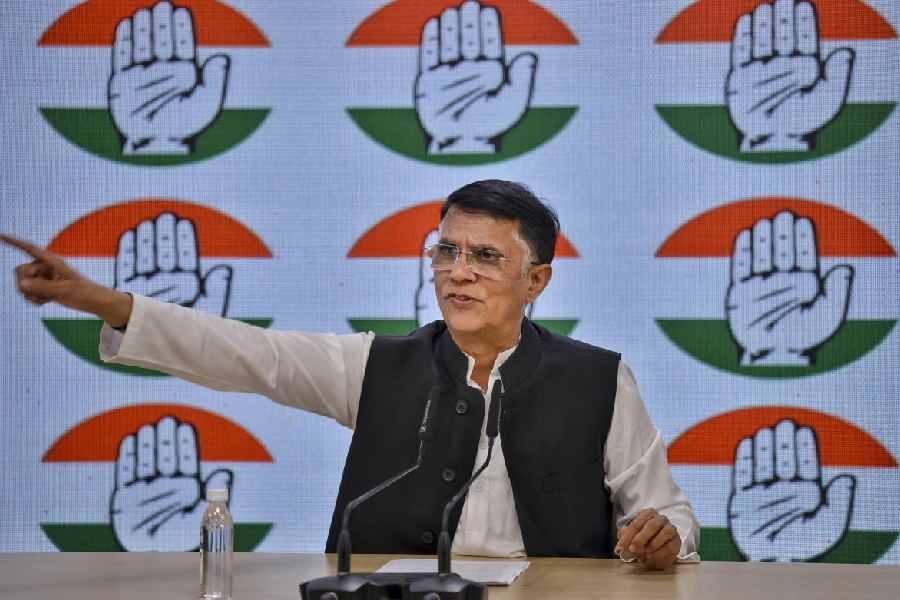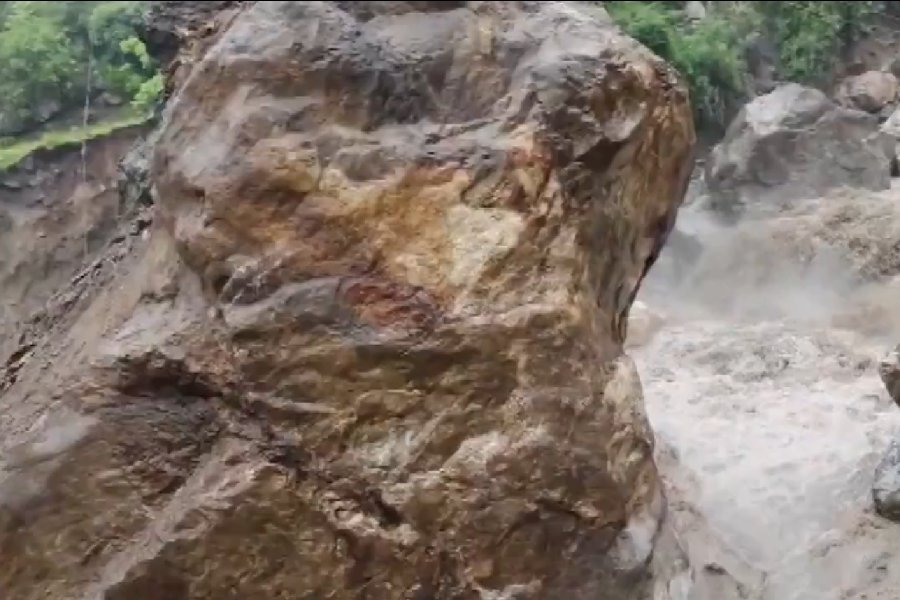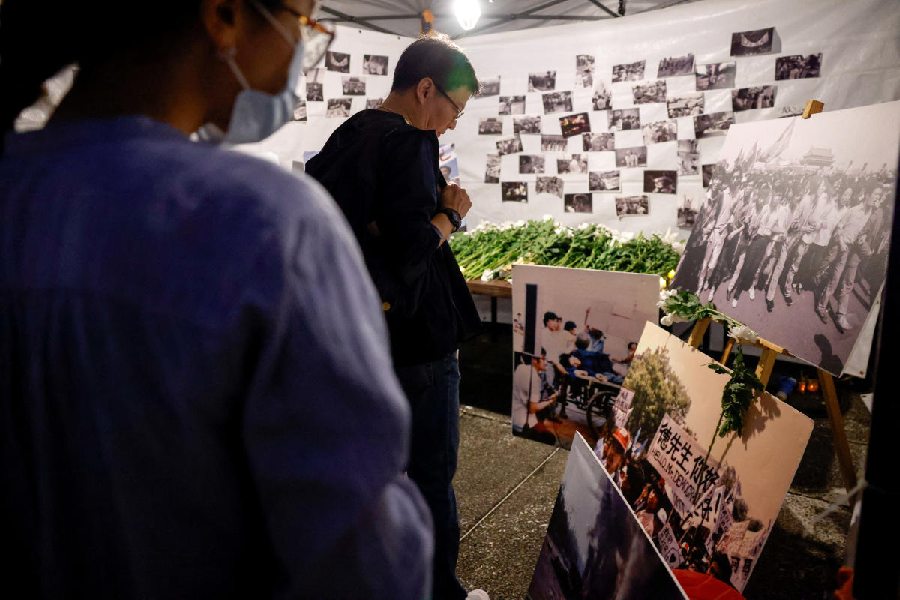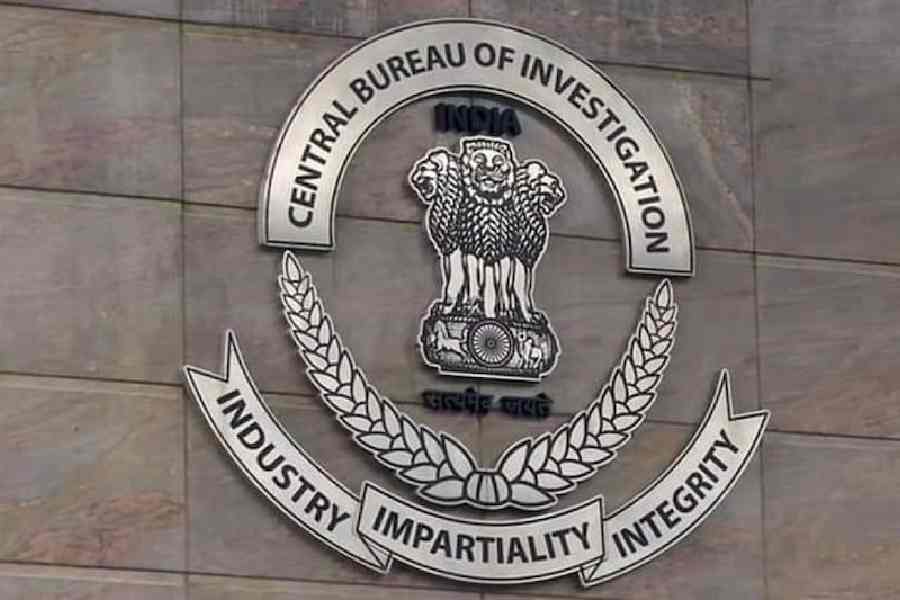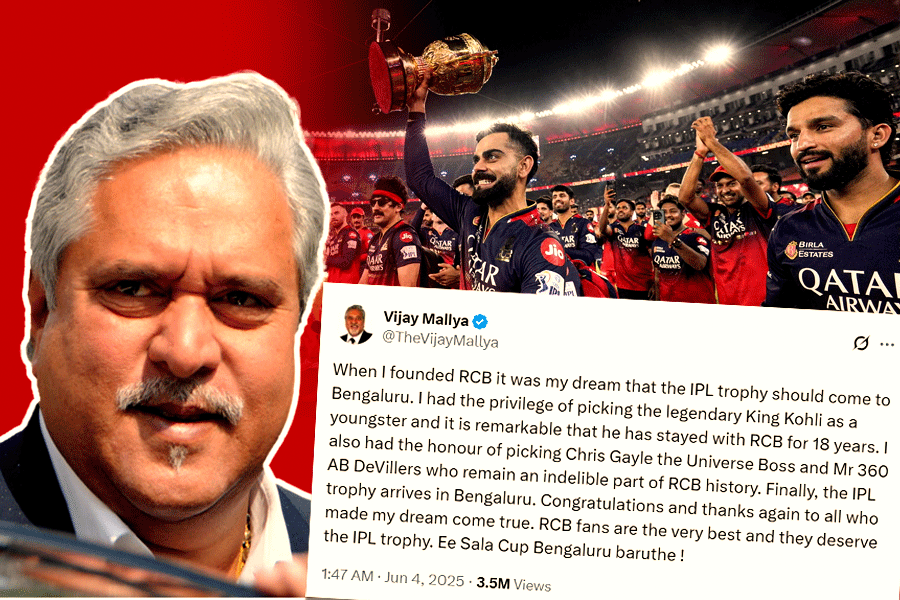 |
| Ela Gandhi (right) receives the Pravasi Bharatiya Samman award from President Pranab Mukherjee in Delhi on Thursday. Picture by Jay Mandal/On Assignment |
Calcutta, Jan. 9: Apartheid had ended and Nelson Mandela was President when the granddaughter of another peace icon walked up to the man who showed what reconciliation could mean.
In her hand was a copy of Mandela’s autobiographical work Long Walk to Freedom.
Mandela had taken the book, then written: “Compliments and best wishes to a trio who I hope will rise and become worthy leaders of our beloved South Africa.”
That was May 3, 1995. The trio: Asha, Arti and Ashish. And the person who had walked up to Mandela in Parliament that day was their mother Ela Gandhi, the Mahatma’s granddaughter.
She had been elected an MP of Mandela’s party, the African National Congress (ANC), in the first free election from Phoenix in north Durban, where 109 years ago Mohandas Gandhi, then a young lawyer, had bought land and set up a settlement.
 |
| Nelson Mandela |
Ela, daughter of the Mahatma’s South Africa-based second son Manilal, grew up facing apartheid. Last month, speaking to The Telegraph from her Durban home, the 73-year-old had recalled those dark days.
“Few jobs were open to Indians and Blacks. We couldn’t work in post offices or occupy executive posts in a business. Leave alone become pilots or airhostesses, we weren’t allowed to fly. In our Settlement (where she grew up) there was no electricity, no running water, no sanitary facilities. We had to clean our own toilets. Grandfather had taught us how to use waste as fertiliser. In the evening, we had to study by candlelight as paraffin was too expensive. We had to fetch water from a canal and boil it for use. The nearest health centre for Indians was 24km away.”
Ela, who was in Delhi today, helped resurrect the Natal Indian Congress (NIC) founded by Gandhiji and was elected vice-president. “I was the first of the NIC executives to be put under house arrest, in 1975.”
For the next nine years, that effectively cut off her three little daughters from society. “They could go out only if friends or neighbours took them,” she said.
Her father Manilal had been politically active, too. He had joined the Defiance Campaign in the early ’50s, went to Kliptown (near Johannesburg) in 1955 for the drawing up of the Freedom Charter (which raised the demand for equal rights) and kept meeting ANC leaders secretly after the party was banned.
“I accompanied father to rallies and knew Mr Mandela as a youth wing leader,” she said. “He did not like my father then as he did not agree with non-violent protest.”
After the Sharpeville Massacre of 1960, when police shot at unarmed protesters, the ANC formed a guerrilla wing. Mandela, who died last month, was its first leader. In the Gandhi family, Mandela was “hero-worshipped” when he went underground. “Here was one person, we thought, who could do this to the government. It was a sad day when he was arrested.”
Twenty-seven years later, a day before Mandela’s release, Ela was part of a United Democratic Front team that met him at Victor Verster Prison. “We spent the whole day with him in a cottage the jailors had put him in towards the end. Mama Sisulu (wife of Walter Sisulu, Mandela’s fellow inmate at Robben Island) and I were the two women in the team of dozen or so. He had read our CVs and knew exactly who each was.”
He came across as a candid leader and family man. “At the time there were negative reports in the press about (his wife) Winnie. She was brave but she was also very militant and not the kind to forgive. Mr Mandela reminded us how she had suffered at the hands of the apartheid government. She had married young and hardly had a marital life. We could also sense his regret that his children grew up without him.”
Once the ban was lifted on the ANC in February 1990, Ela joined the party. She went on to be part of the Negotiations Forum and then the Transitional Executive Council. “We, a group of 10 women, were responsible for ensuring that women came out to vote. Polling crossed 90 per cent in the first free election in 1994,” Ela recalled.
Working side by side in Parliament and in the party, her association with Mandela grew stronger. A two-term MP herself, Ela was not surprised when he stepped down after the first term. “He said he was tired. Ever since his release, he had hardly spent time with his family. But he did help with the elections in 1999.”
Ela remembers a campaign in Phoenix where one of the candidates brought an old truck so plastered with posters that it looked like a pageant. “When Mr Mandela saw that truck, he climbed on it, joining the young people who were singing and dancing there. His guards were on tenterhooks, seeing the President on that rickety vehicle. But when Mr Mandela decided something, nothing could stop him. He had his own style of dancing, a dignified one. He was a warm and spontaneous person who loved people and always remained accessible.”
Ela did not attend Mandela’s memorial service, having been out of the country. “My daughter Asha, who stays in Pretoria, went to Union Buildings (where he lay in state). He had become like a wax statue. After 10 days, what do you expect? I am happy with the memories I have of him.”
Her best memories of Mandela are from the day he addressed a packed rugby stadium in Durban during a countrywide tour he undertook soon after his release. “He told people that they needed to forgive and reconcile as he himself had done.”
The other occasion was a trip to India in 1995 when he was the chief guest at the Republic Day parade. “We went to visit Bapuji’s ashram at Sabarmati the next day on his wish,” Ela said.


